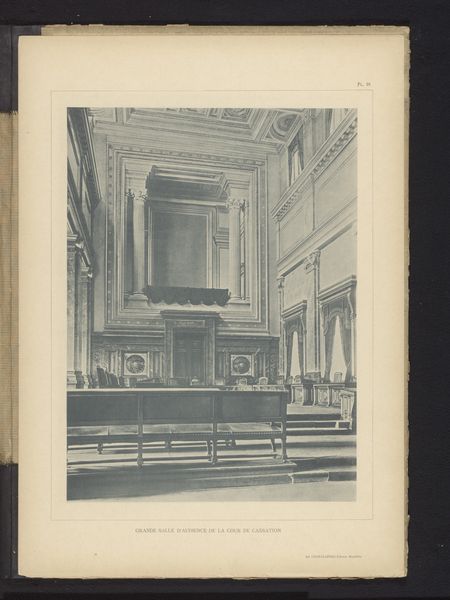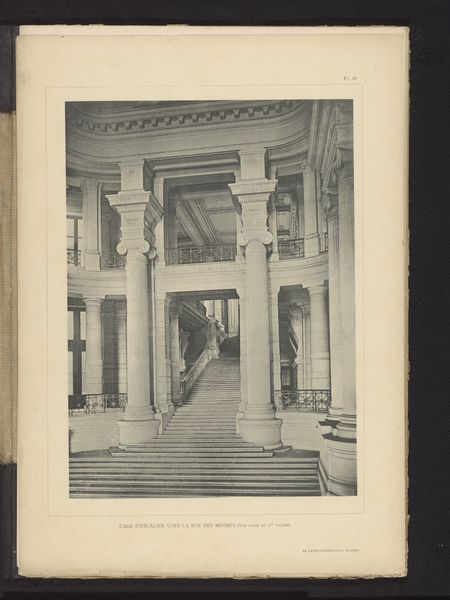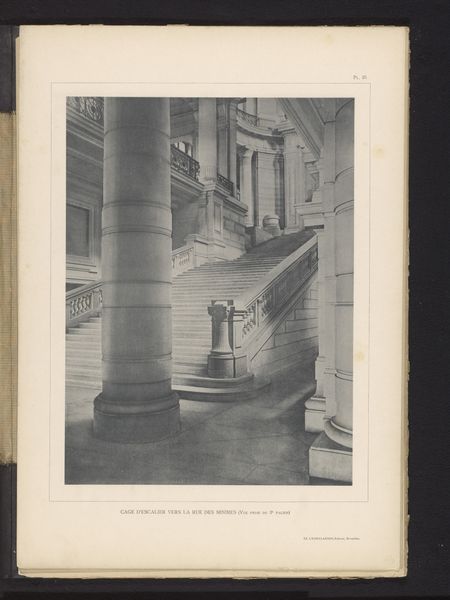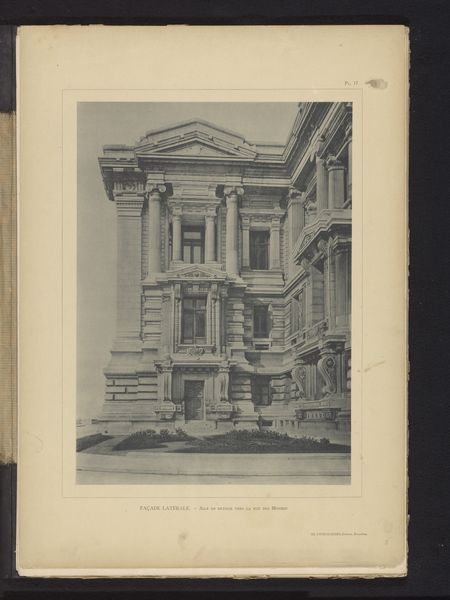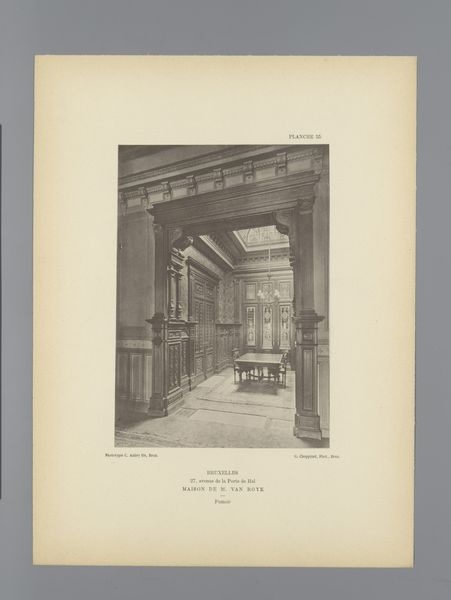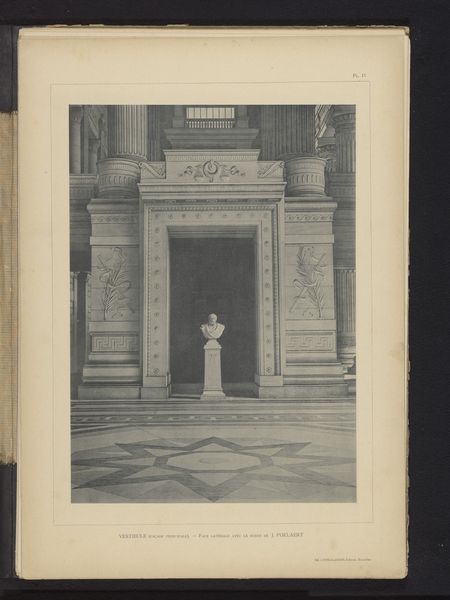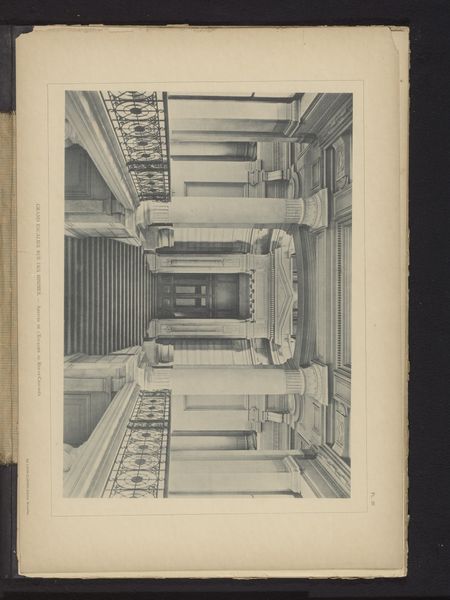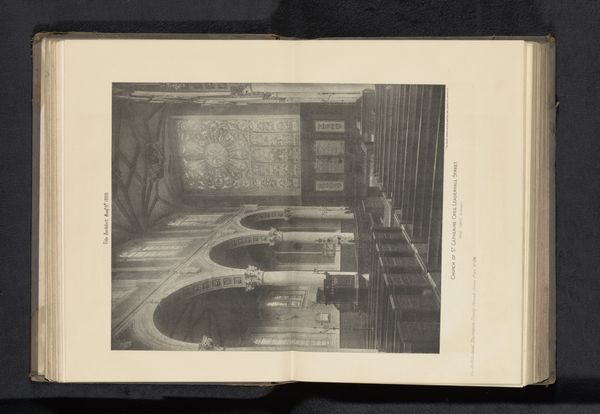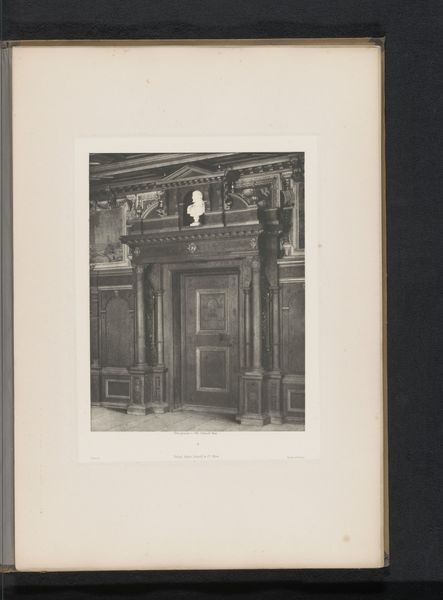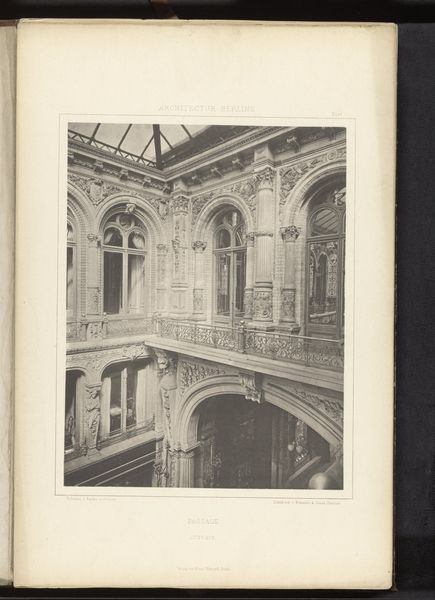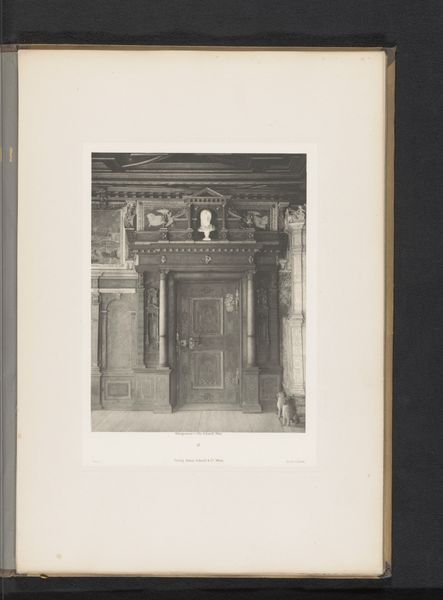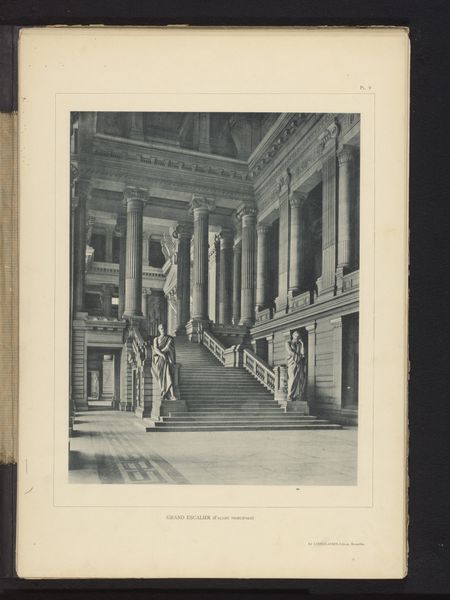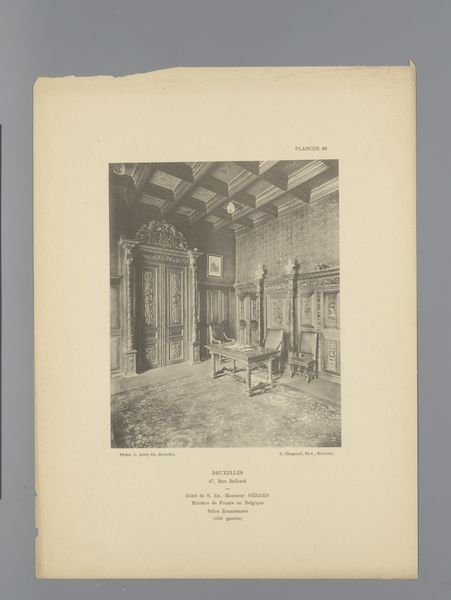
print, etching, photography, engraving, architecture
# print
#
etching
#
landscape
#
photography
#
geometric
#
academic-art
#
engraving
#
architecture
#
realism
Dimensions: height 300 mm, width 243 mm
Copyright: Rijks Museum: Open Domain
Curator: What strikes me first is the sheer scale. It’s monumental, but almost…oppressive? Editor: It certainly conveys power. We are looking at a print titled "Brede hal in het Paleis van Justitie in Brussel, België," or "Wide Hall in the Palace of Justice in Brussels, Belgium." It dates from before 1894. Curator: The architecture is very... classical. The lines are so rigid, those imposing columns...It feels like it's designed to make you feel small, to impress you with the weight of the law, right? I wonder how that affects the individuals who navigate this space? Editor: Absolutely. The Palace of Justice itself was designed to project state power and, like many large-scale public works, reinforce certain socio-political hierarchies. The late 19th century saw an explosion of such monumental architecture across Europe. Considering it from that lens, what narratives might it be trying to create or dominate? Curator: The space seems almost devoid of life, even though the title mentions a hall, presumably for people. Are we supposed to infer a statement on how the justice system perhaps lacked inclusivity? Or consideration of regular citizens' needs? I mean, the composition choices made for the etching certainly reinforce the cold, stark reality of justice served at the time. Editor: Prints like this circulated widely. Consider their role in shaping public perception. How might these images have been used to promote, or even critique, the institutions they depicted? Also, note the medium: engraving and etching were methods of mass production, thereby giving this view more access and perhaps influence. Curator: Good point. Mass production allowing for distribution is so critical, especially when analyzing historical context. This print isn’t just about the building, but also about the message it carries and how that message spread and perpetuated specific social views of justice in Brussels. It offers a glimpse into a particular time and place, filled with societal structures of power. Editor: Indeed. And it pushes us to consider the role art plays in both reflecting and shaping those structures. Curator: It certainly is an imposing statement about societal power, and a good example of its time. Editor: I'll remember its function as not just a visual record but as an active player in constructing and distributing meaning about a place.
Comments
No comments
Be the first to comment and join the conversation on the ultimate creative platform.
